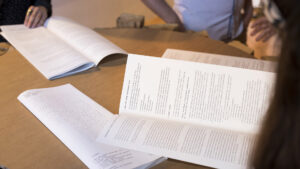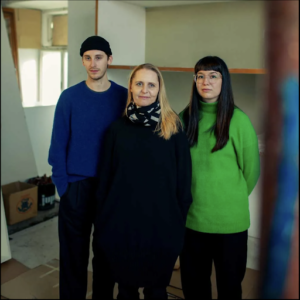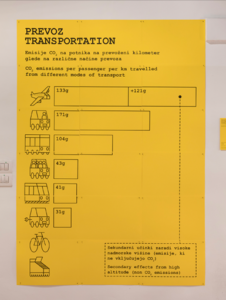- Posted on December 14th, 2022
Ljubljana Design Biennale’s Sustainable Cultural Production Toolkit

Imaginative responses to contemporary challenges
Futuring Research Team have produced a new Sustainable Cultural Production Toolkit following their environmental audit of Slovenia’s 27th Ljubljana Design Biennale Super Vernaculars exhibition, which took place from May – September 2022.
Ljubljana Design Biennale (BIO27) is taking active steps to reduce its environmental footprint and communicate innovative approaches in sustainable cultural production. 2022’s Super Vernaculars exhibition explored how designers and architects can revisit local traditions and value systems to create imaginative responses to contemporary challenges such as water scarcity, food, waste and declining biodiversity.
BIO27 presented a fantastic opportunity for social and regenerative design researchers Žan Kobal, Tamara Lašič Jurković, Barbara Predan to join forces and begin ‘Futuring’ – a practice that involves imagining a more sustainable future. A future in which new forms of design can play a vital role in response to ethical, political, social and ecological issues.
Julie’s Bicycle Creative Green team participated by organising two workshops. They also shared the learnings from the methodologies they developed to measure the carbon footprint of the project, and from their experience working on other projects. JB also supported the Futuring Research Team with a review of the toolkit.

Researching sustainable practices within cultural production
Over their six-month research period the Futuring Research Team found that key sustainable practices for BIO27 included:
- Measuring impact of cultural productions to monitor improvements
- Using influence to lead the way and lobby suppliers for change (e.g. using renewables)
- Borrowing local materials and returning them to the local provider to be reused (such as timber)
- Reducing waste e.g. by passing on or returning the timber for resale after use
- Reducing emissions e.g. by straying from more traditional exhibition design structures and adapting to use materials with lower CO2 footprint such as swapping metal structures for wood
- Using creative methods to raise awareness of environmental issues to audiences
And more long term: taking preventive measures and implementing adaptation strategies, as opposed to making economic investments in response to issues rising from climate change. These were found to be ultimately more cost effective and enabled a faster response.


Sharing knowledge
Futuring Research Team learned so much from this process that they felt that developing a toolkit was a great way to share their knowledge. They decided to create a resource offering links to helpful tools, case studies, and guides: from large-scale sustainable capital projects to small-scale day to day practical advice. They also acknowledged the barriers to implementation that many cultural institutions face, offering cost-effective solutions and tips.
The team are facilitating a series of workshops to introduce and demonstrate the potential use of the toolkit to several other Slovenian cultural institutions.
Due to the speed at which new research and developments in sustainable practices take place, the toolkit is considered by the team to be a work-in-progress. Eventually the team plan to develop a digital platform through which designers and cultural institutions can add and share knowledge, continuing to build the toolkit and making it a free, accessible and up-to-date resource, supporting the sector to confidently move towards a greener and more sustainable future.
Image credits:
1, 2 & 4: Super Vernaculars, Exhibition View, BIO27, 2022.
3: Futuring Research Team: Žan Kobal, Tamara Lašič Jurković, Barbara Predan.
